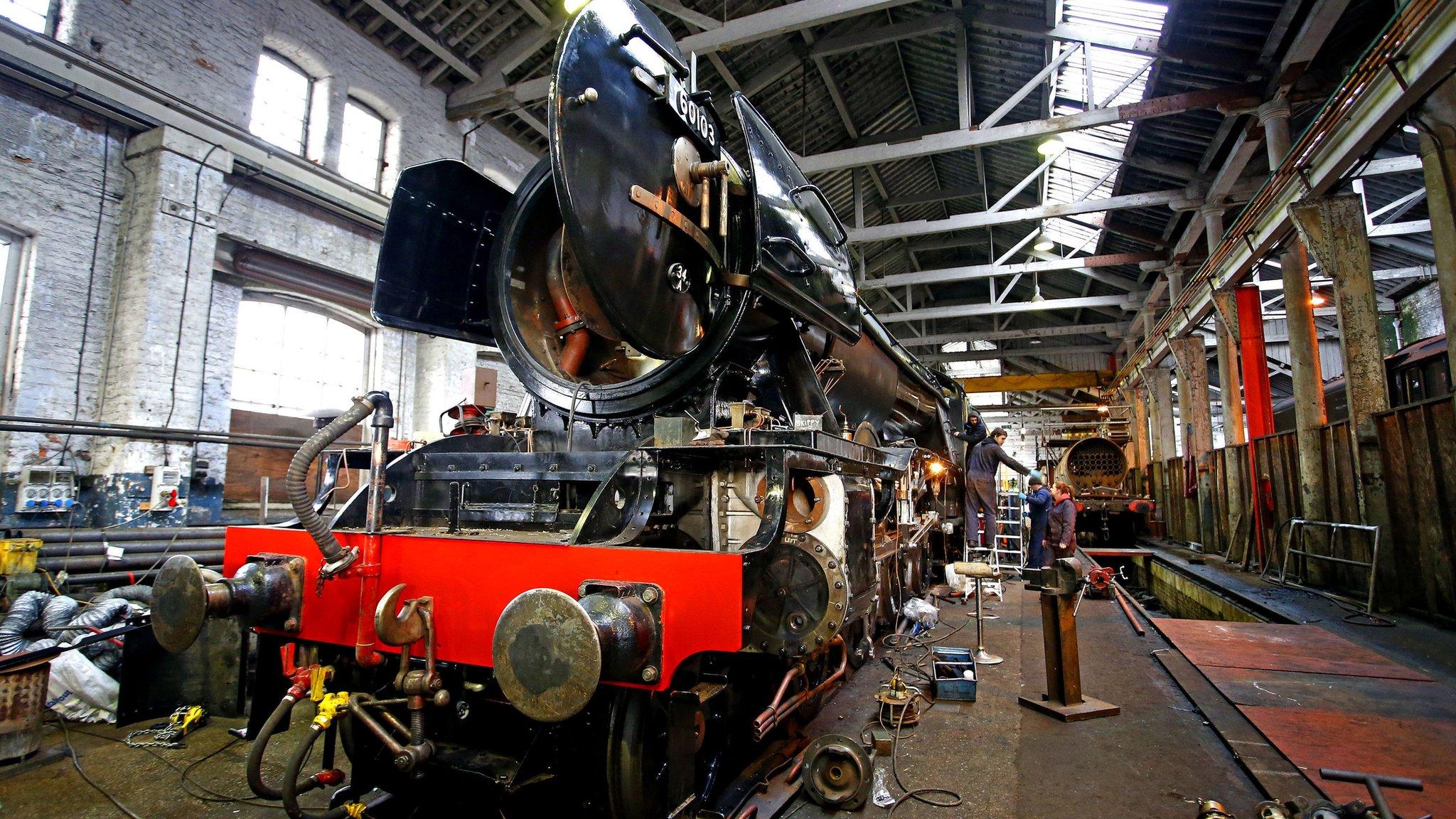Memories of Flying Scotsman sought as locomotive returns
- Published
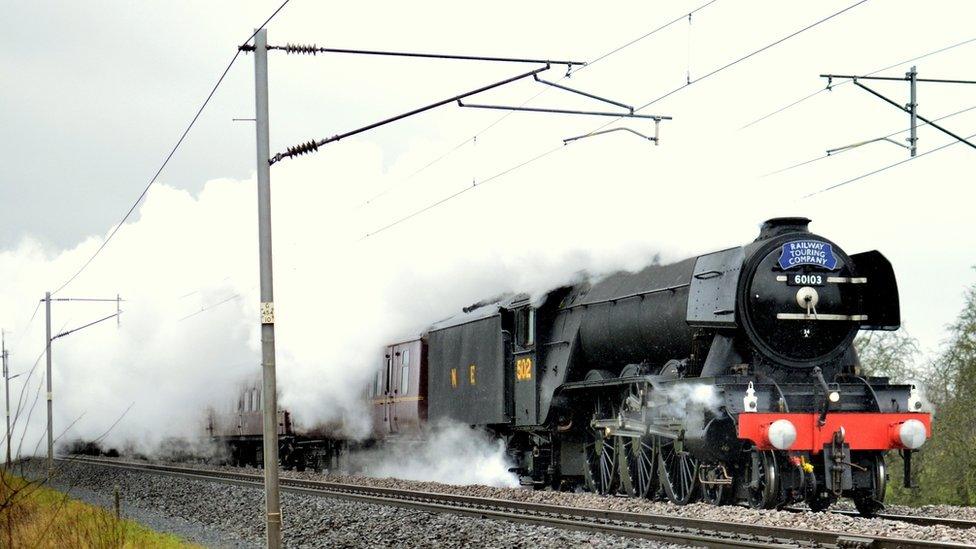
The famous locomotive made a return to the railway on Saturday after having been out of service for 40 years
People with links to one of the world's most famous locomotives are being urged to come forward with their memories.
York's National Railway Museum (NRM) has launched an appeal to mark the Flying Scotsman's 93rd birthday.
The engine, which retired from service in 1963, has been restored for the NRM in a decade-long, £4.2m refit.
On Saturday it ventured on to the mainline network for the first time in 40 years as it took a test run through Cumbria and Lancashire.
Railway enthusiasts waited for the return of the Flying Scotsman as Olivia Richwald reports
Last month, the locomotive emerged into the East Lancashire Railway's Bury Bolton Street station after the final stages of the work at a nearby yard, thrilling hundreds of rail enthusiasts.
It is due to be painted in its new green livery on Wednesday and have its nameplates reattached before making its journey between London Kings Cross and York on 25 February.
Public services will begin later this month, alongside an exhibition at the museum.
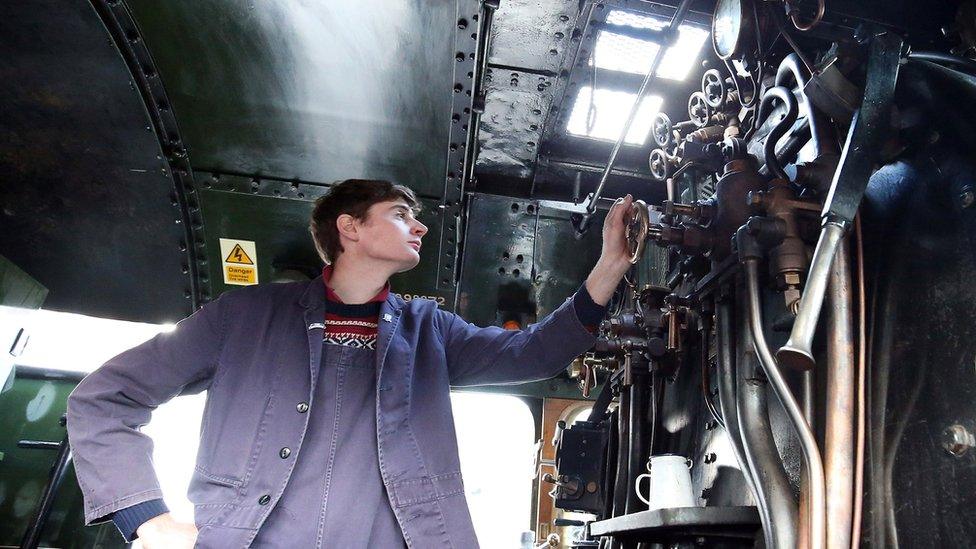
The Flying Scotsman went on a low speed test run along the East Lancashire railway line last month
Former fireman John Morgan, from Peterborough, said he was looking forward to seeing the Flying Scotsman steaming between the two cities again.
The 77-year-old became a fireman at 16 and worked on some of the most famous locomotives of the age, including the Flying Scotsman and the Mallard, the world's fastest steam train.
"I have a lot of very good memories of 60103 [Flying Scotsman's British Rail number]," he said.
"I did a lot of trips on the footplate and shovelled a lot of coal.
"There was a lot of interest, even back then. Whenever we'd back up into King's Cross there'd be a crowd of people around wanting to get up into the cab."

Rail enthusiasts turned out to see the locomotive at Carnforth station as it made a return to the mainline network
Bob Gwynne, associate curator of collections and research at the NRM, said: "As we've been planning our highly anticipated Scotsman Season, many people have already approached us with their special connections to the iconic steam locomotive and the famous train it was named after.
"We've heard from crew members that worked on board and their families, and even of some babies born on the train."

Flying Scotsman
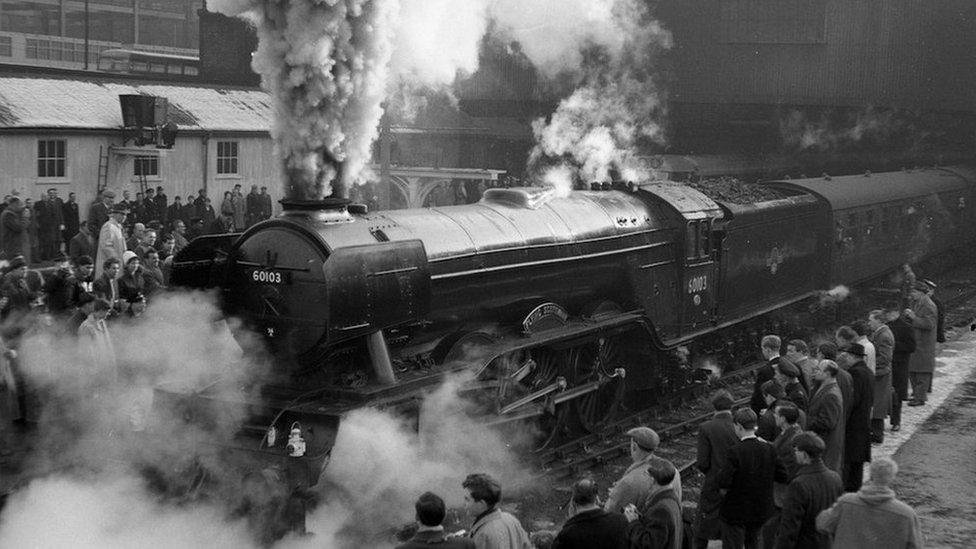
Designed by Sir Nigel Gresley, Flying Scotsman emerged from Doncaster Works on 24 February 1923
The British Empire Exhibition in 1924 made Flying Scotsman famous
In 1934, Scotsman was clocked at 100mph - officially the first locomotive to have reached that speed. But, some claim City of Truro was the first steam engine to break the 100mph record, in 1904, when it apparently reached a speed of 102mph running down a slope
It is 70ft (21m) long, weighs about 96 tonnes and had a top speed of 100mph
It has travelled approximately 2,500,000 miles
During World War II, it was repainted wartime black
By 1995, it was part-owned by record producer Pete Waterman
The engine was bought for the nation in 2004 by the National Railway Museum (NRM) in York using £415,000 in public donations, a £365,000 gift from Sir Richard Branson and a £1.8m grant from the National Heritage Memorial Fund.

- Published7 February 2016
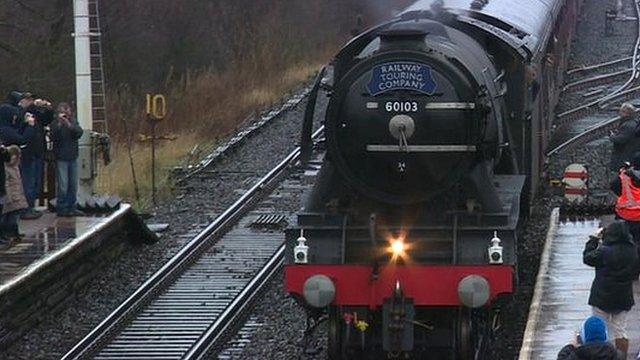
- Published6 February 2016
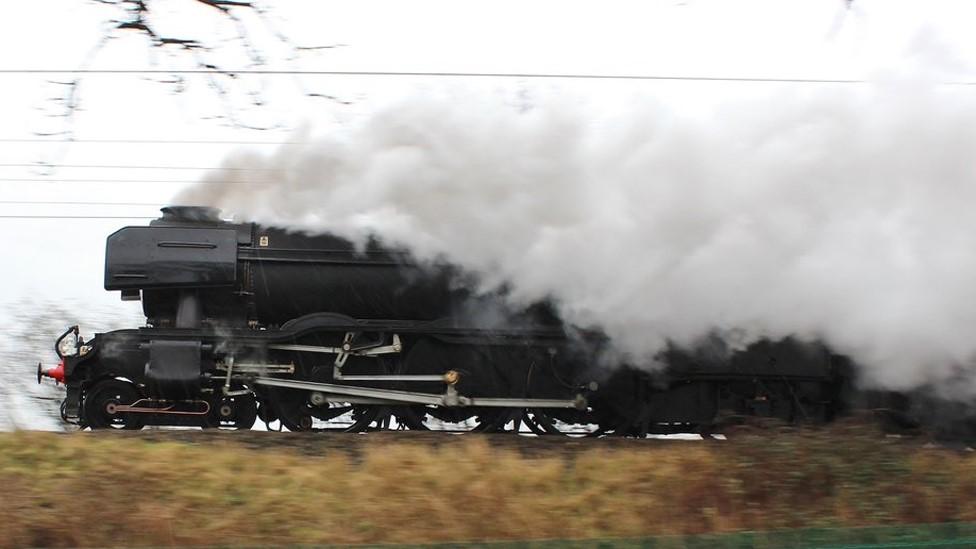
- Published6 February 2016
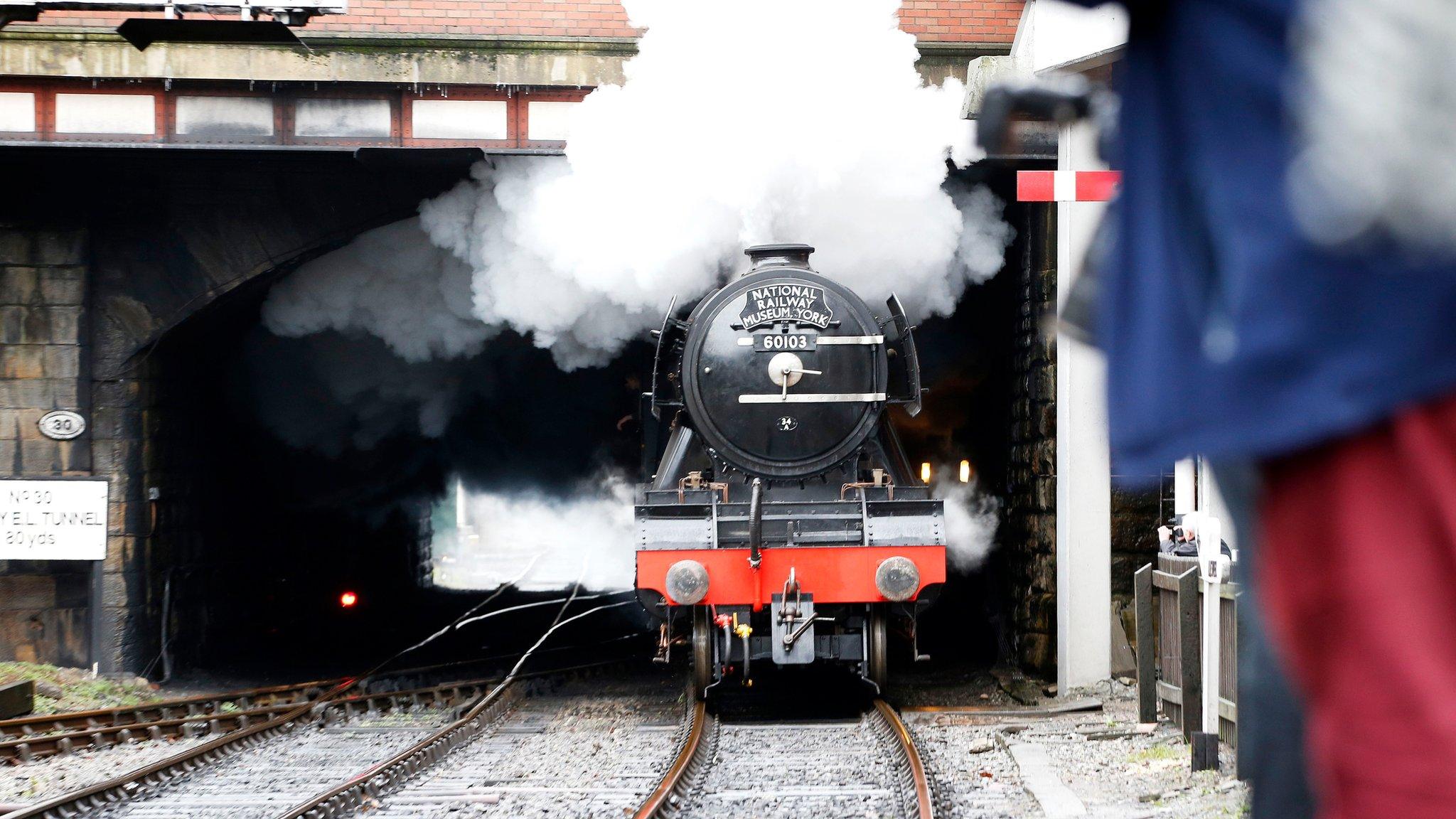
- Published8 January 2016
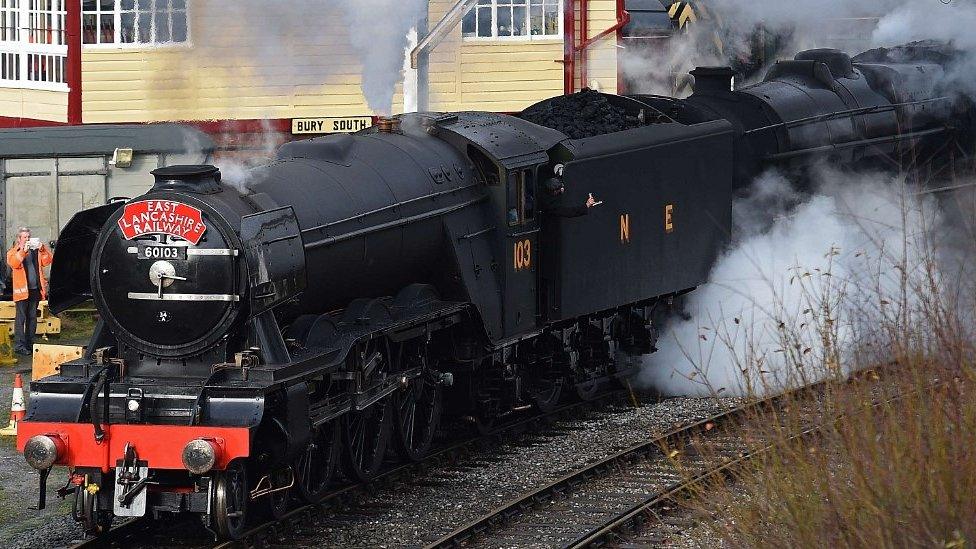
- Published8 January 2016
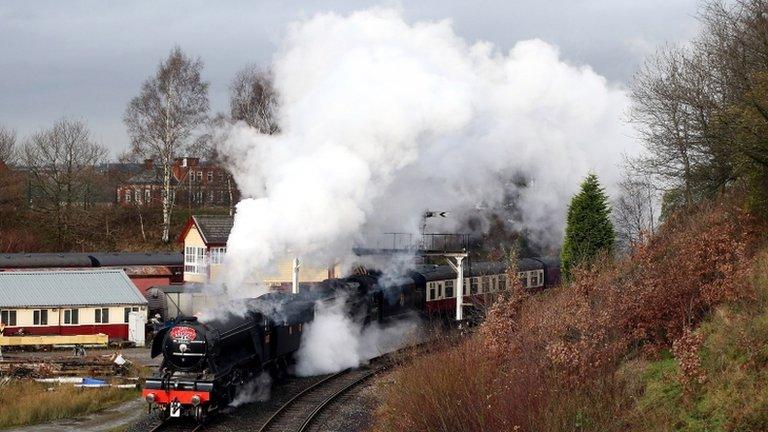
- Published8 January 2016
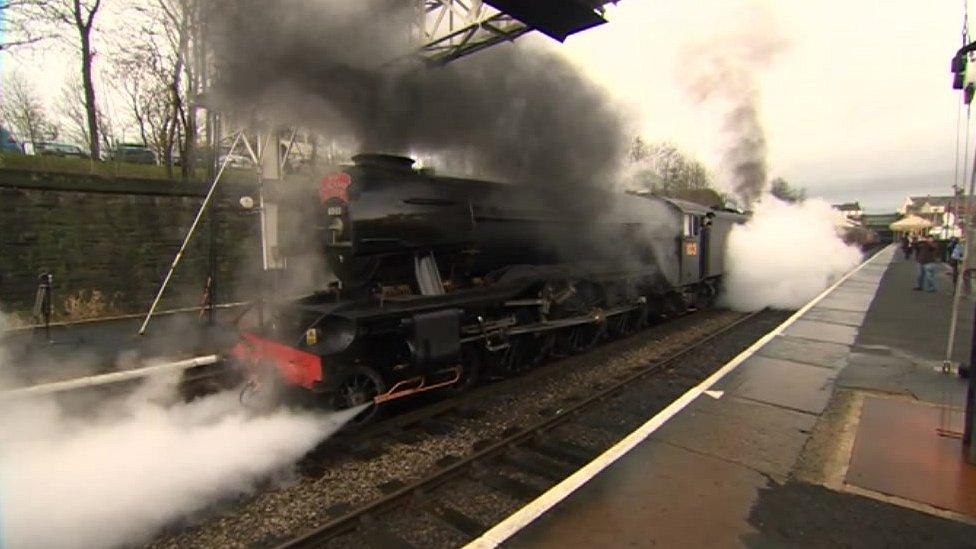
- Published5 January 2016
